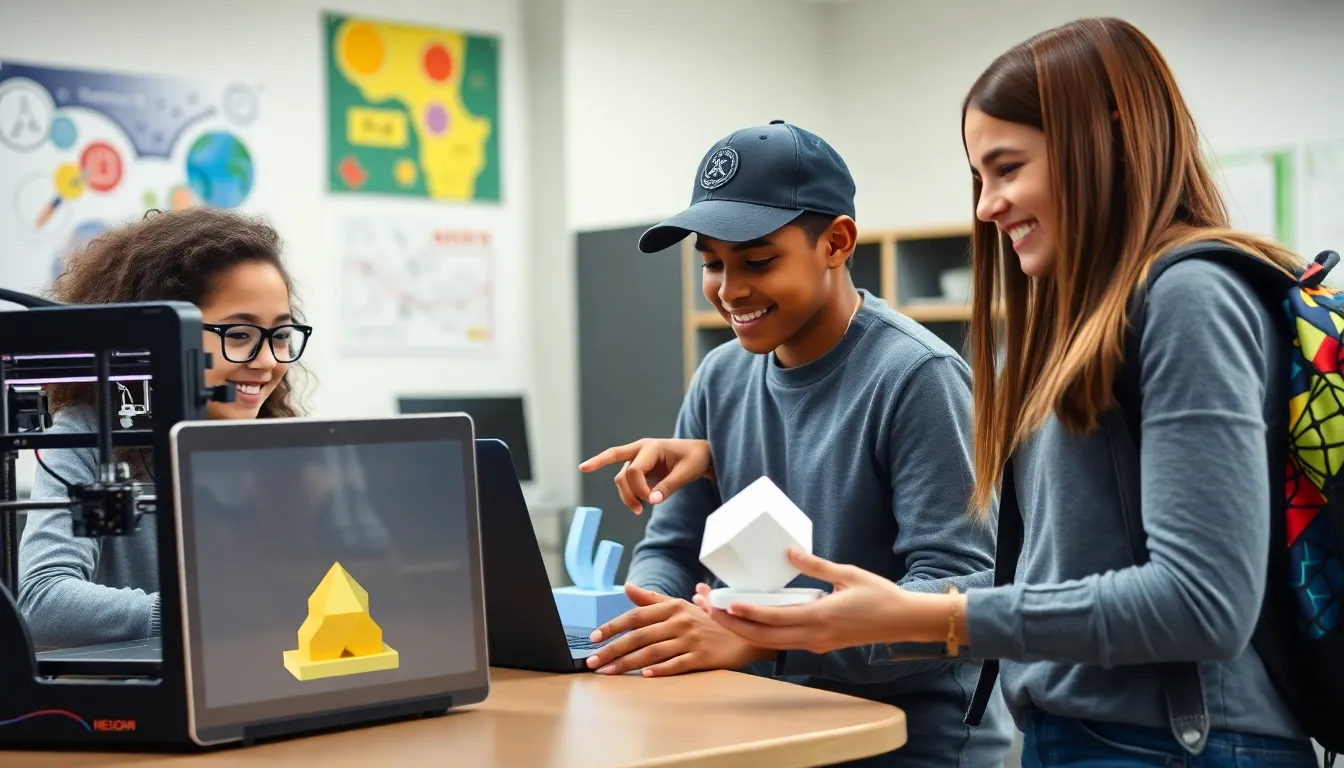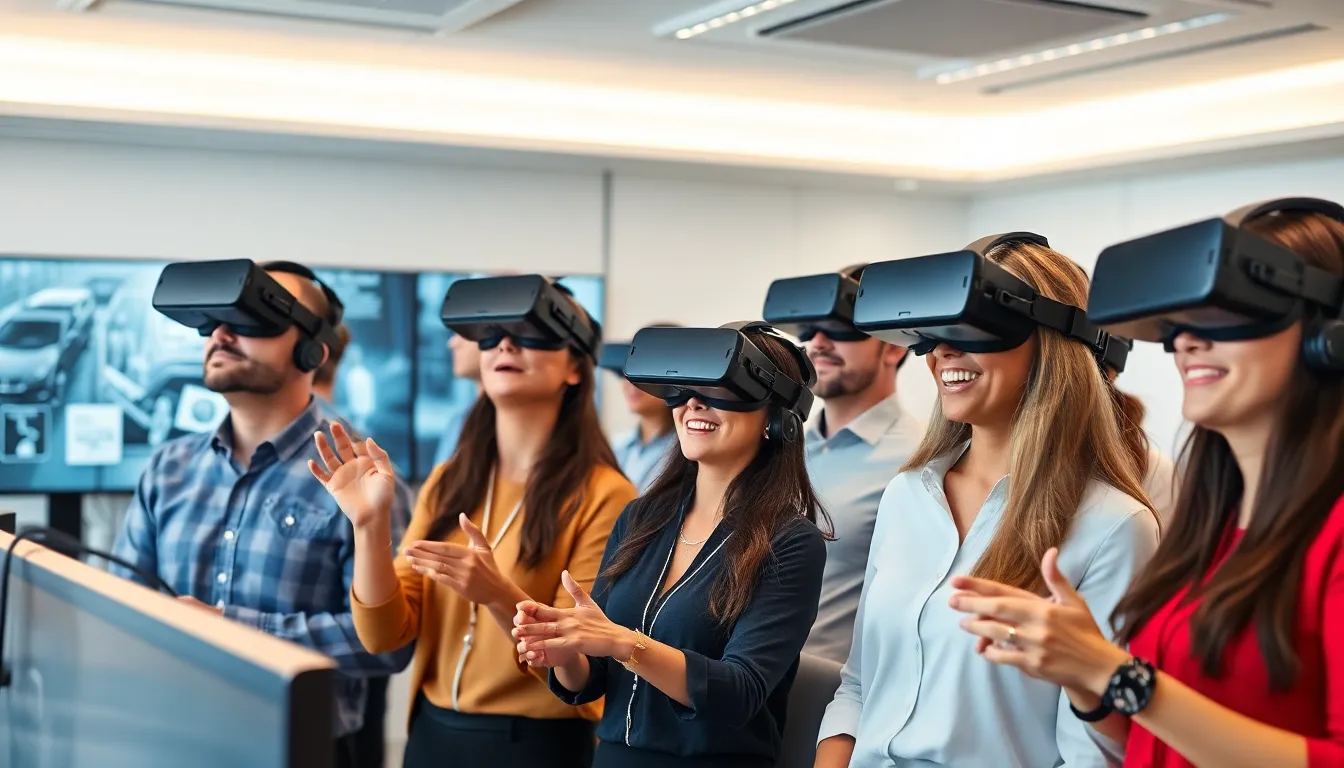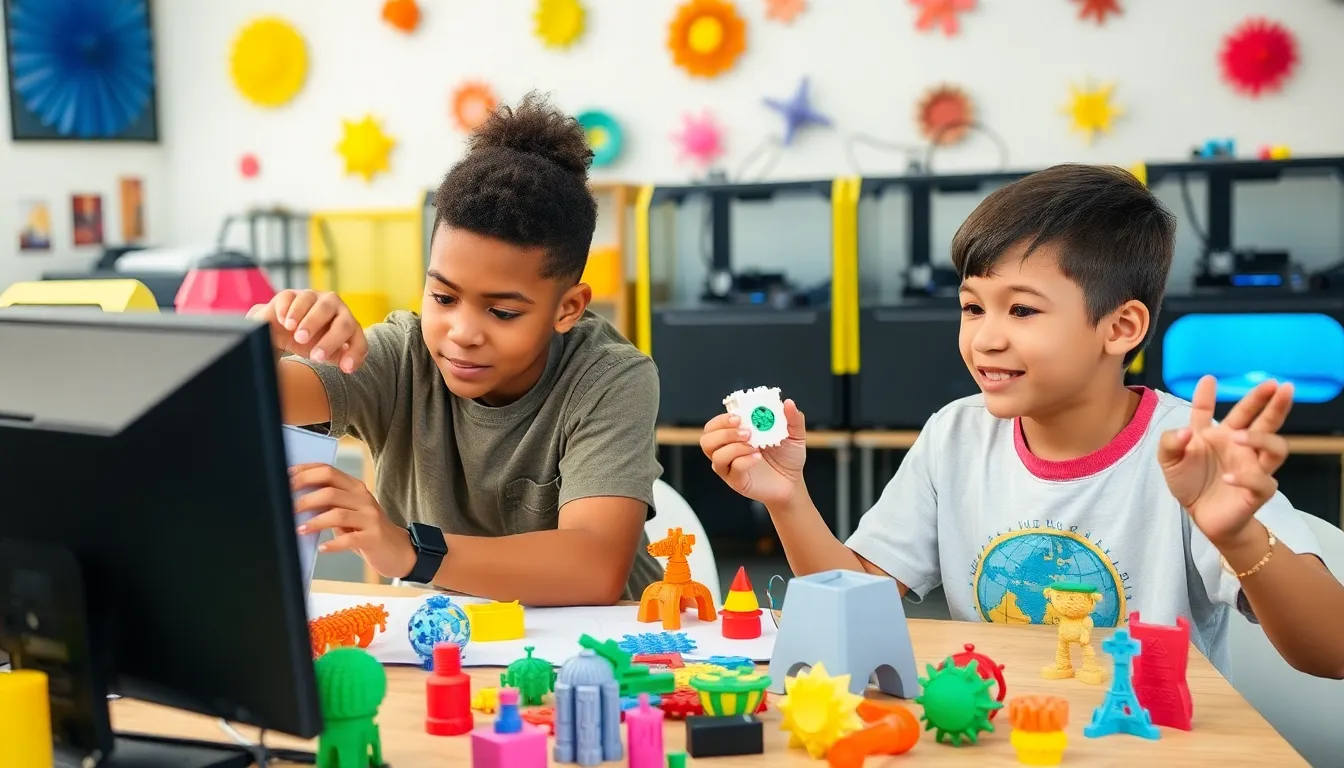As technology continues to evolve, multi-user virtual reality (VR) is redefining how people connect and interact. This immersive experience allows multiple users to share a virtual space, breaking down geographical barriers and fostering collaboration like never before. Imagine stepping into a digital world where friends, colleagues, or even strangers can engage in real-time, creating memories and experiences that feel tangible.
The rise of multi-user VR is transforming industries from gaming to education and beyond. By combining social interaction with cutting-edge technology, it offers a unique platform for creativity and innovation. As more developers invest in this space, the potential for enriched experiences grows, paving the way for a future where virtual interactions feel as real as face-to-face meetings.
Table of Contents
ToggleOverview of Multi-User VR
Multi-user virtual reality (VR) creates shared virtual environments where multiple users can interact simultaneously. This technology facilitates real-time communication and collaboration, making it ideal for various applications. Users engage with each other through avatars, enhancing the social experience and mimicking real-world interactions.
Applications of multi-user VR span several sectors. In gaming, players can immerse themselves in cooperative quests and competitive arenas. Education benefits from students collaborating in virtual classrooms, where interactive lessons create engaging learning experiences. Businesses leverage multi-user VR for virtual meetings, training, and team-building activities, breaking down distance barriers.
Key components of multi-user VR systems include:
- Networking Capabilities: Essential for connecting users in diverse locations, ensuring smooth interactions.
- Avatar Customization: Allows users to express themselves, creating a personal connection in the virtual space.
- Real-Time Interaction: Ensures immediate responses, enhancing the sense of presence and engagement among users.
- Cross-Platform Accessibility: Supports various devices, expanding the potential user base.
As the technology matures, enhanced features like improved graphics, more realistic physics, and advanced tracking methods are becoming standard. These advancements increase user immersion and engagement, providing experiences that can mimic or even surpass physical interactions. The trajectory of multi-user VR suggests a future where remote collaboration becomes seamless and intuitive.
Benefits of Multi-User VR

Multi-user VR delivers significant benefits that enhance user experience and collaboration. It fosters interaction and learning in ways that traditional methods cannot achieve.
Enhanced Social Interaction
Enhanced social interaction defines multi-user VR. Users engage in immersive environments, interacting through avatars that mimic real-world gestures and expressions. This engagement helps build relationships and fosters communication, creating a sense of presence even when physically apart. Users can participate in shared activities, such as gaming, social gatherings, or virtual events, enriching their experiences. Research indicates that immersive social interactions improve emotional connection among users, contributing to increased satisfaction and reduced feelings of isolation.
Collaborative Learning Experiences
Collaborative learning experiences illustrate the power of multi-user VR in educational settings. Students in virtual classrooms can work together on projects, conduct experiments, or explore new concepts in real time. This technology allows for interactive simulations and scenarios that enhance understanding and retention of knowledge. Studies show that collaborative learning in VR environments promotes critical thinking and problem-solving skills. Users benefit from diverse perspectives, as they collaborate across geographical boundaries, making education more engaging and effective.
Challenges in Multi-User VR
Multi-user VR faces several challenges that can hinder its effectiveness and user satisfaction. These challenges include technical limitations and user experience issues that require ongoing attention.
Technical Limitations
Technical limitations significantly impact multi-user VR systems. Latency issues arise during interactions, leading to delays that disrupt communication. Bandwidth constraints affect the number of simultaneous users in a shared space and can cause lag. Compatibility problems between different devices create barriers for users trying to connect across platforms. Hardware requirements also pose challenges; high-performance devices are often necessary for optimal experiences, limiting access for some users. Addressing these technical constraints is essential for enhancing the overall quality of multi-user VR environments.
User Experience Issues
User experience issues can detract from the appeal of multi-user VR. Avatar realism varies, affecting personal connection and immersion for users. Interface complexities can confuse new users, making navigation challenging. Additionally, motion sickness remains a concern, particularly in dynamic environments, as some users struggle to adapt to virtual movement. Social dynamics, such as user behavior and interaction styles, can influence collaboration and affect group cohesion. Solving these user experience challenges will improve engagement and satisfaction in multi-user VR platforms.
Future of Multi-User VR
The future of multi-user virtual reality (VR) lies in the integration of emerging technologies and diverse applications across various sectors.
Emerging Technologies
New technologies are shaping the multi-user VR landscape. Improvements in artificial intelligence (AI) enhance user interactions, allowing for more realistic avatars and dynamic environments. Cloud computing offers scalable resources, enabling high-quality experiences without the need for powerful local hardware. Advanced networking technologies, such as 5G, provide quicker data transfer rates, significantly reducing latency. Mixed reality (MR) integrates real-world elements into virtual experiences, creating hybrid environments that enhance user engagement. Moreover, haptic feedback technology allows users to feel virtual interactions, further bridging the gap between digital and physical spaces.
Potential Applications
Multi-user VR is set to impact numerous fields. In healthcare, professionals can conduct virtual surgeries for training and collaboration, improving surgical precision through shared experiences. In architecture and construction, teams can visualize designs in a shared virtual space, leading to better collaboration and decision-making. Retail can also benefit, with virtual storefronts allowing customers to explore products alongside others, enhancing the shopping experience. Virtual tourism allows groups to explore landmarks together, breaking geographical boundaries. Finally, corporate training programs can immerse employees in team-building exercises within realistic scenarios, enhancing skill development and collaboration.
Multi-user VR stands at the forefront of innovation in digital interaction. Its ability to foster collaboration and social connection across distances is reshaping how individuals engage in various sectors. As technology continues to evolve, the immersive experiences offered by multi-user VR are likely to become even more compelling.
Addressing existing challenges will be crucial for maximizing user satisfaction and engagement. The integration of AI, cloud computing, and advanced networking can enhance the overall experience, making virtual interactions more seamless and intuitive.
The potential applications are vast and varied, promising a future where multi-user VR not only complements but enhances real-world interactions. As industries embrace this technology, the possibilities for collaboration and creativity are limitless.






